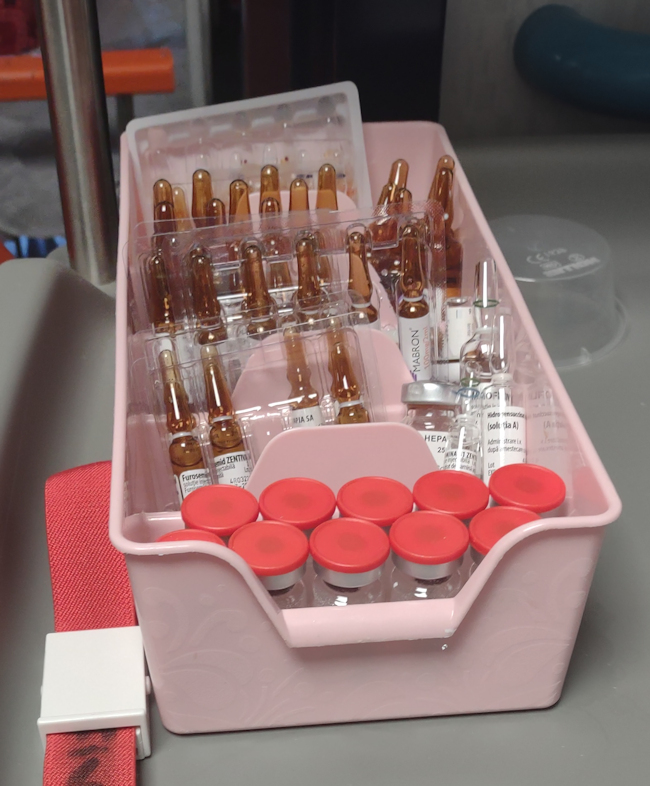
On a recent trip, I unexpectedly got to experience Romanian socialized medicine. On a Thursday evening, I suddenly developed severe stomach pains and started violently evacuating their contents. This was at around 11 PM several hours after eating a hot dog, sauerkraut, and potatoes. The vomiting continued most of the night causing additional pain from pulled stomach muscles.
By the following afternoon, I was still in pain and was taken to the local public hospital. (I’m told the private hospitals are better but cost more). It was a Friday afternoon, the waiting room was virtually empty and I was taken in almost immediately. Once inside it was quite hectic with many bed-sized curtained areas. A doctor spoke with me shortly and got my information and when he found out that I didn’t have any local insurance he told me that I would be responsible for paying my own bill, but that the first three days were free for everyone (which was nice).
I was in pretty bad shape by that point and they gave me something to help stop the urge to throw up, I began to shake uncontrollably and my biceps were turning blue (perhaps due to a lack of oxygen). They put me on an IV and gave me something for the pain. A doctor asked if I’d eaten any mushrooms lately and I said no. (Apparently, it was mushroom season and sometimes people picked the wrong ones.)
Then a nurse came and inserted a tube through my nose and into my stomach. At the other end of the tube was a bag. This was the first difference I noticed between the U.S. and Romania. In the U.S. they would probably use a pump to keep your stomach drained, in Romania they just let a gravity siphon do the work (which is actually a lot quieter than the machine). I will detail many of the other differences I noticed at the end.
Tests
They did some blood tests and an ultrasound and determined that I had pancreatitis which is an inflammation of the pancreas, often due to gallstones or alcoholism. Since I don’t drink, it was gallstones.
They assigned me to a room in the Gastroenterology ward.
The Room
I was fortunate, the room I was in had recently been remodeled from an 8-person room down to a 3-person room. It had its own bathroom with a sink, shower, and toilet. The room had 3 beds, 3 small cabinets, a sink, and a paper towel dispenser. Apparently, Romanians like it hot because the room was about 75 to 80 degrees. Fortunately, I got a bed next to the window and was able to open it to cool the room down (and my roommates never complained). The beds were adjustable and also had heavy duvets with a cover on them.
Patient’s Responsibilities
Under Romanian socialized medicine, patients are usually required to bring their own pajamas, knife, fork and spoon, towel and washcloth, and 2-liter water bottle. Unfortunately, I had none of those. So, they provided me with a new set of scrubs (made of heavy paper). I couldn’t eat anyway, so the eating utensils were irrelevant for the first few days. Most patients also must bring their own toilet paper (except in the gastroenterology ward).
Saturday and Sunday
Upon awakening on Saturday, I noticed the hospital was exceptionally quiet. Apparently, there is only a skeleton staff on weekends, I only saw one doctor and he was only checking on a single patient and then he left. There also seemed to be fewer nurses. I also didn’t seem to be getting any refills on my IV until around 11 AM. Then they hung several IV containers on my IV pole and continued with my IV and pain meds. Once those IVs were gone, there were no more IVs until 7 PM. Eventually, I discovered that this was the normal routine… IVs were only delivered twice a day. And when I wanted mine earlier I was called an impatient American (behind my back but in English). Some nurses spoke English some didn’t, but Google Translate helped for those who didn’t speak English.
Every meal time included tea and initially, I got broth. But with a tube in my nose and no spoon, it was virtually impossible to eat (or drink). I’ve since been told that in the U.S. I would not have been given anything to eat or drink with that tube in, for fear of aspiration. The tube was already starting to irritate my throat every time I tried to swallow.
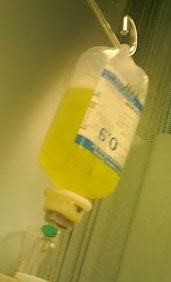
Monday
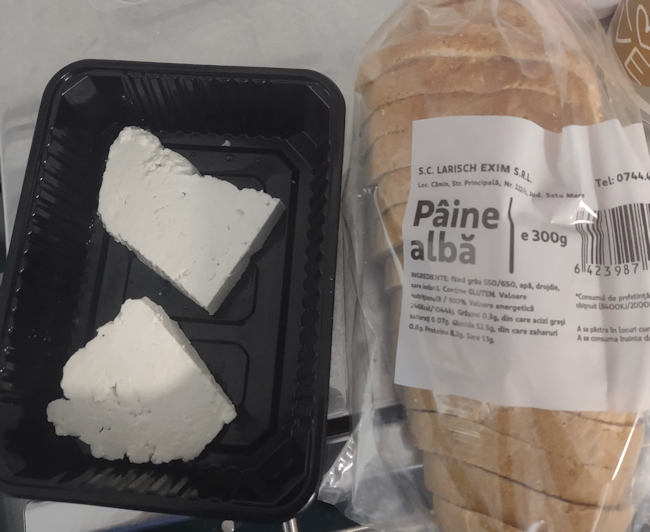
On Monday the doctors were back and I had more blood tests, an ultrasound, and a CT scan. I spent most of the day getting IVs and relatives brought me water, silverware, and a straw. At this point, the bag connected to my nose tube was filling up about once a day, and when I tried to eat the soup it came right back out through the tube. The food service people brought me a loaf of bread and some local cheese (which, of course, I couldn’t eat), plus tea and broth.
Tuesday

On Tuesday they performed an MRI and spotted a Gallstone blocking one of my ducts and they told me they would perform an endoscopic procedure on Wednesday where they put a tube down your throat which would snake its way to the blockage break it up and then put a stent in. At this point, my family had about 100 people praying for my recovery. That night at about midnight a nurse changed the bag attached to my nose tube.
Wednesday
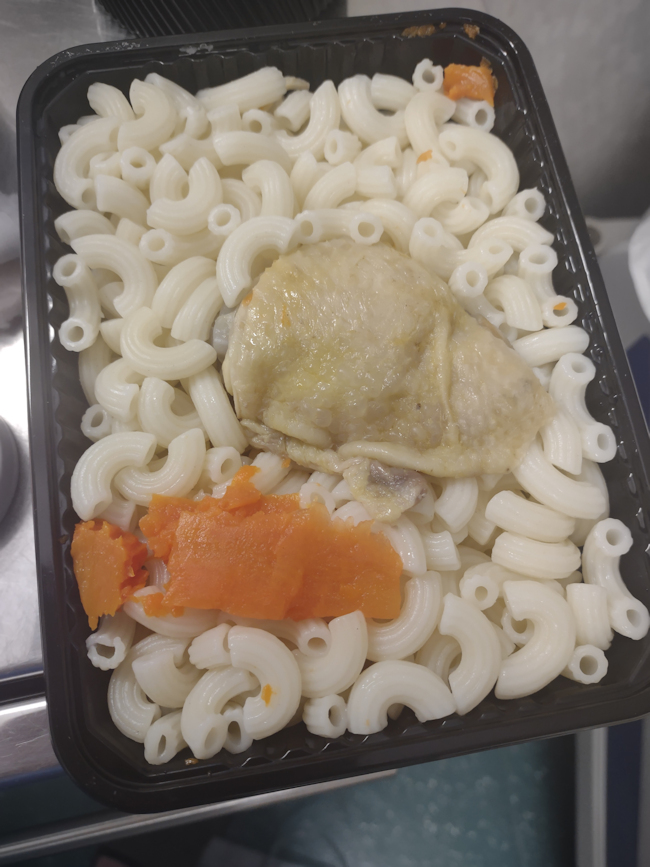
On Wednesday morning the doctor was shocked to see the bag was still empty and surprised that I was feeling much better, since they had located the stone the day before. So, they canceled the endoscopy. I was still weak and getting multiple IVs twice a day but they started giving me solid food. And I was doing better.
My bloodwork came back that I was deficient in Potassium, so the nurse injected 3 vials into the plastic IV bottle which promptly started burning my arm. I’ve learned that in the U.S. potassium is only administered in measured dosages very carefully and my dosage was probably supposed to be spread over 3 IV bottles not all in the same one. Too much potassium can cause an abnormal heartbeat (arrhythmia). Severe cases can lead to death.
Thursday and Friday
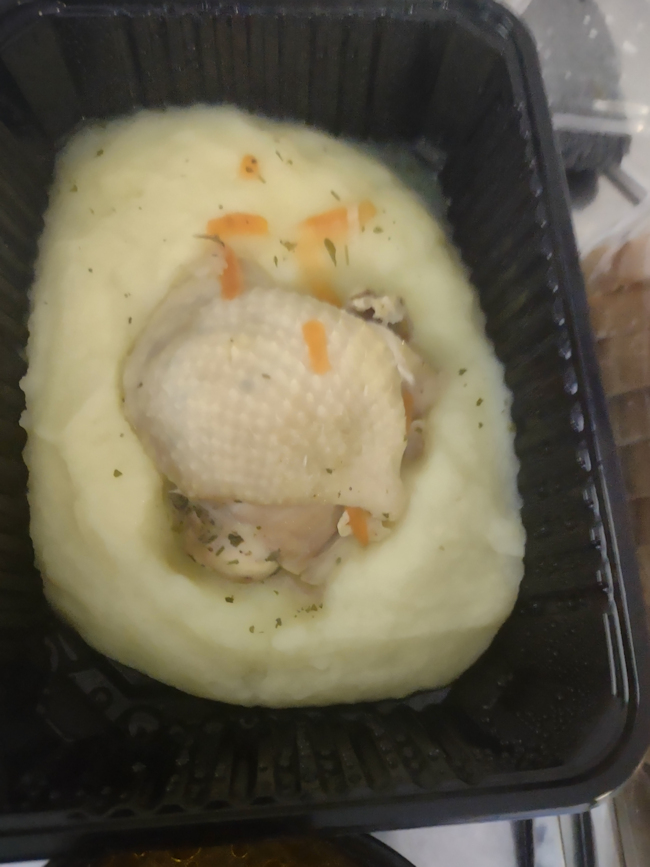
Thursday I continued to rest and recuperate. On Friday I was allowed to sign myself out (if I promised to see my doctor when I got home) but they were still surprised that I had recovered without any surgery.
To sign out I was taken to a run-down little office and had to settle my bill before they would return my street clothes. The bill for the week was 9,900 Romanian Leu which came out to about $2,100. which is roughly two months of retirement income for the average Romanian.
The Good and Bad

The good things about the hospital was that I was made comfortable, and they had modern equipment like Ultrasound, CT scan, and MRIs. The Doctors seemed caring and knowledgable although a bit authoritarian. While I was there I developed a red spot on one of my smaller toes and asked about it. They brought in a Dermatologist and a Rheumatologist. The Rheumatologist told me that Gout only affects the big toe which a quick search of Google shows is untrue. So although the doctors seemed knowledgable some of their knowledge appears questionable.
Differences I noticed:
- They think they are better than U.S. hospitals because their first 3 days are free.
- They think if they didn’t know it 30 years ago the U.S. couldn’t have known it either (untrue).
- Older Doctors believe patients should just do as they are told and not ask too many questions.
- Nurses can wear perfume and a robe that looks like a bathrobe (people wear them on the street as well).
- Very few staff on weekends.
- When taking blood they use a giant syringe rather than the vacuum tubes they use here.
- They use a gob of cotton instead of gauze after sticking you.
- They are very regimented (i.e. only delivering IVs at certain times).
- Some hospital rooms are very hot (considered a germ incubator in the U.S.).
- Nurses actually come very quicky when you press the call button.
- Meals are served in disposable containers, so there are no dishes to wash.
- They still primarily use ampules instead of vials for injections (see picture).
- The IV poles have flimsier wheels than U.S. versions.
- Not all patients get a name bracelet (I never figured out why some people got them and others didn’t).
- They have nice soft thick blankets.
- They don’t provide ice or water to drink.
- Ice packs are just a frozen water bottle wrapped in a towel.
- Nobody knocks they just burst into the room and flip on the lights.
- Your street clothes are held in a trash bag in a dingy back room in the basement.
- There are no TVs in the room, everyone just uses their phone.
- You aren’t given a menu, the Doctor just decides what you get.
- They don’t have bandaids, only cotton and tape. (They are available in country, this hospital just didn’t have any).
Note: Although the food pictures may not look great, I was thrilled to be able to eat the vegetable broth, and the food is purposely bland for the gastroenterology ward.
Summary:
All-in-all, the care was adequate and treatment was prompt, but it didn’t seem as modern as an American hospital. As a matter of fact it reminded me of an economy version of the hospital I was in 30 years ago. But I am grateful they were there and they provided the care they did. Without them I may not have survived the weekend.
Post Script:
I visited my doctor when I got home. We scheduled bloodwork and another MRI. The bloodwork showed signs of previous pancreatitis but the MRI miraculously stated “all signs of pancreatitis and gallstones have resolved”.
